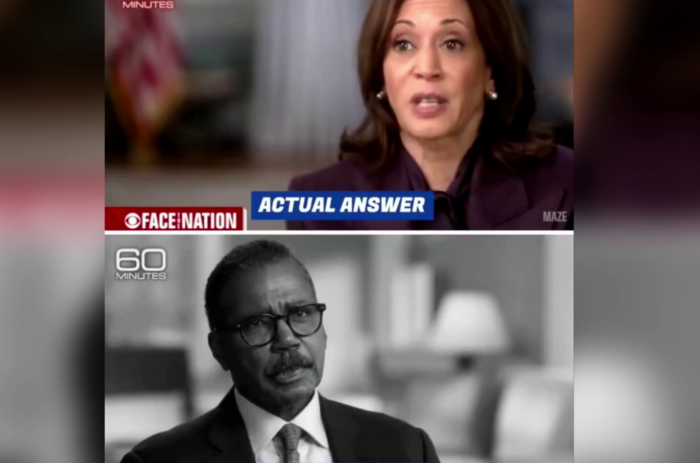redo Jump to...
print Print...
Directions
-Read the excerpt below from Yarden Frankl's HonestReporting.com post.
-Read "Types of Media Bias" in the right column. Then answer the questions.
From honestreporting.com:
PART 2: HonestReporting has documented how the vast majority of articles and editorials in the New York Times depict Israel in an unfavorable and often erroneous way. Yet the NY Times might argue that its coverage is negative because Israel’s actions and policies warrant such coverage. In other words,it would claim to be simply reporting the news rather than presenting a biased viewpoint.
 HonestReporting did a comparison of the NY Times’ coverage to that of the Washington Post and Los Angeles Times. If coverage of Israel by all three papers was close, then perhaps the NY Times’ argument would have merit.
HonestReporting did a comparison of the NY Times’ coverage to that of the Washington Post and Los Angeles Times. If coverage of Israel by all three papers was close, then perhaps the NY Times’ argument would have merit.
On the other hand, if the NY Times presented a different picture of Israel than the other papers, it would add to the evidence that it reports from a biased, anti-Israel perspective. How else could one explain that the NY Times covers Israel differently than other sources reporting on the same events?
In every category measured, the coverage of Israel by the New York Times was far worse than that of the LA Times and Washington Post. Again, this is analyzing coverage of the same events in the same time period (January-February 2014.) Four categories of bias were examined:
- Fairness
- Context
- Terminology
- Selection of Sources
Some of the bias is very subtle, but when readers absorb news that is written in a biased way, it can’t help but impact the way they understand events.
Last week in Part 1 we looked at Fairness. Today in Part 2 we look at Terminology and Selection of Sources:
Terminology: Percentage of articles where inaccurate terms are used to Israel’s disadvantage.
When Hamas terrorists are labeled “militants,” their true nature is hidden. When terms like “right-wing,” “hawkish,” and “nationalist,” are applied to the Israeli government and not to Abbas’ Palestinian Authority (which has shown far less flexibility in the peace process), it gives the impression that the lack of progress is primarily due to the make-up of the Israeli government.
The use of these misleading labels is so common that many readers see nothing wrong with headlines such as “Israel Orders Airstrike Against Gaza Militant.” But certainly, a headline and article that describe a strike against a “terrorist” (and that’s what those who launch rockets at civilians are by any standard) would have a much different impact.
Unfortunately, this is an area where the Post and LA Times also have work to do. For some reason, when it comes to Israel, journalists will do anything to avoid using the dreaded “T” word (terrorist). At least the Post mentions the rocket attacks in the headline “Israel fires missile at motorcycle rider in Gaza it says was responsible for rocket attacks.” Although the key words are in quotes, the LA Times uses “Israel kills two in Gaza strike targeting ‘terrorist operative.‘” It should be noted, however, that the LA Times ran the article with a completely inappropriate picture of the terrorist’s mother weeping at his funeral.
Sources: Percentage of articles that use direct quotations critical of Israel that are from questionable sources or are factually suspect.
While a direct quotation can bring clarity and insight to an article, there are many ways that quotations can instead distort an entire article. If the quotation is inaccurate or from a source that is biased or has a history of spreading false information, then it will do more to confuse the issue. Even when a quotation is balanced by another viewpoint later on, if it is more prominently placed in the article, it will also steer the reader to one perspective. This is especially troubling when dealing with people who live in a situation where saying the wrong thing publicly can lead to harm for themselves and their families.
In “Settlement News to Wait Until Kerry Leaves Israel,” we find:
Xavier Abu Eid of the Palestine Liberation Organization’s negotiations unit said that Israel was “under an obligation to cease all settlement activities, not for one or two days, but forever.”
But this is not true. So even if a high ranking official said it, the NY Times is under no obligation to publish it.
In the article “In West Bank Settlements, Israeli Jobs Are Double-Edged Sword” the NY Times quotes a Palestinian laborer who says:
“I feel like I’m not a human being – we are serving the occupation,” said Mr. Jalaita, 47, a father of five, two of them university students. “I am forced to work here because I have a house, I have a family. Tomorrow, if there is another place to work, if there is work in Palestine, I will do it.
But was this quote honest and truthful? Under the Palestinian Authority, one can be targeted for saying the wrong thing. Can we take this source at face value?
While the LA Times scored very well in the use of quotations, the same cannot be said of the Washington Post where the use of biased quotations was almost as bad as in the New York Times. In the article “Israel says Palestinian ‘incitement’ could undermine peace talks,” Hanan Ashrawi responds to Israel’s demand that the Palestinians stop incitement by saying:
I think that Netanyahu is desperate to find a way to scuttle the talks and blame the Palestinians, including clutching at straws and providing these fabrications.”
Yet incitement is a real issue and has been heavily documented. Why should the Post publish Ashrawi (who has a fairly consistent record of providing biased and inaccurate quotes to the media)?
Conclusions:
The way the New York Times covers Israel displays a clear bias. We have analyzed its coverage on its own merits and compared to other leading American newspapers — that are not known for being pro-Israel. In all our studies going back over many years, it has shown a consistent bias, reporting negatively on Israel and Israeli actions. Negative stories far overwhelm positive ones, important context is lacking, misleading terminology is used, and quotations showing subjective bias influence readers to have a poor impression of Israel.
We intend to follow the New York Times, as well as the Washington Post and the LA Times throughout the year to see if coverage improves.
Ask the NY Times Public Editor, Margaret Sullivan why the paper’s coverage is so biased against Israel when compared with other reputable news sources. E-mail her at public@nytimes.com.
from honestreporting.com/in-depth-analysis-the-new-york-times-washington-post-la-times
To accurately identify different types of bias, you should be aware of the issues of the day, and the liberal and conservative perspectives on each issue.
Types of Media Bias:Questions
At the end of the example of the Times’ use of Terminology to present a biased report, Mr. Frankl writes, “a headline and article that describe a strike against a “terrorist” (and that’s what those who launch rockets at civilians are by any standard) would have a much different impact [on the reader].” Do you agree with his assertion? Explain your answer.
Scroll down to the bottom of the page for the answers.
Answers
Opinion question. Answers vary.





